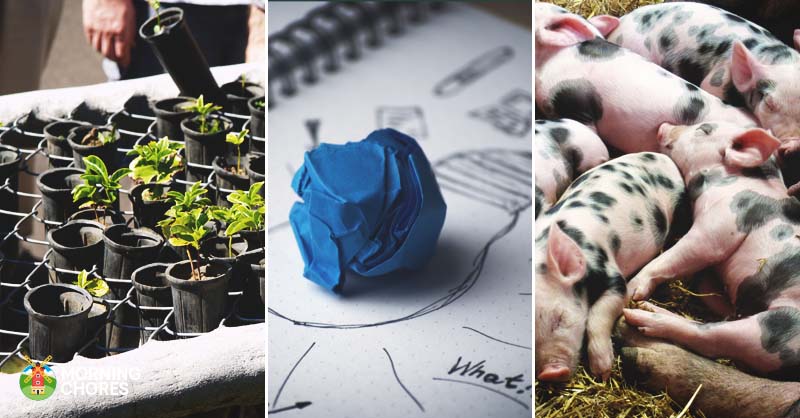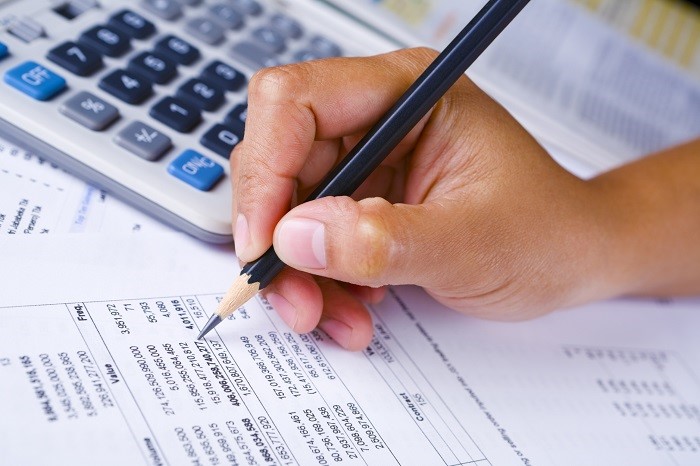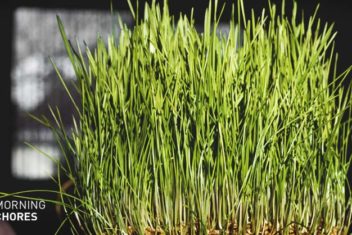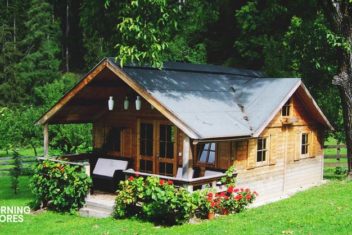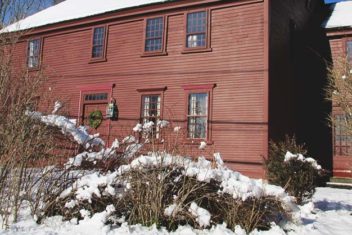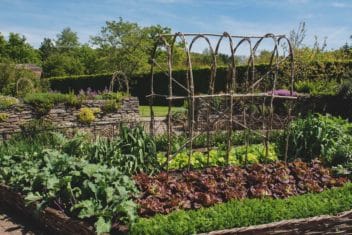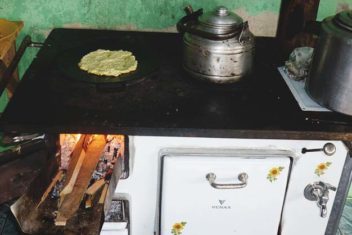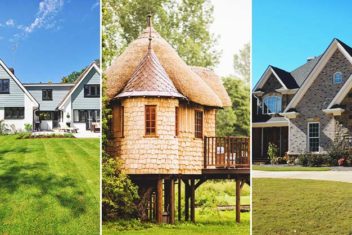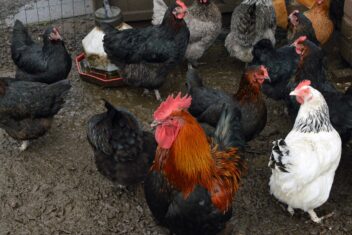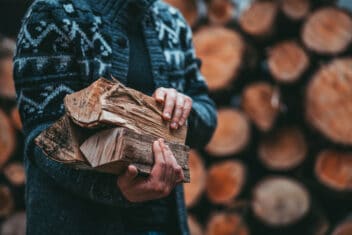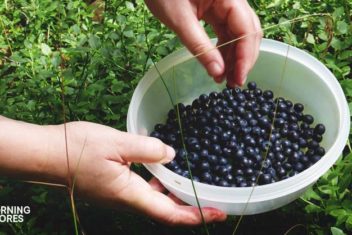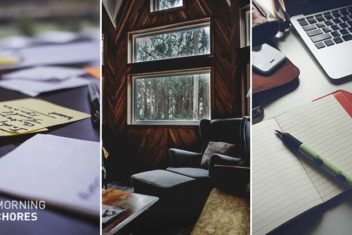So a new year is upon us, and we ask ourselves the same question that we do every year…what are we going to do with it?
Well, you could set certain goals to go further with your career, get in better shape, or even achieve certain dreams and goals you’ve been meaning to for years.
But what about your homestead? You can’t forget about that important project. You should want to start your homesteading year off well too.
So that is why I’m bringing you a few tips to help you get your homestead started off on the right foot this year.
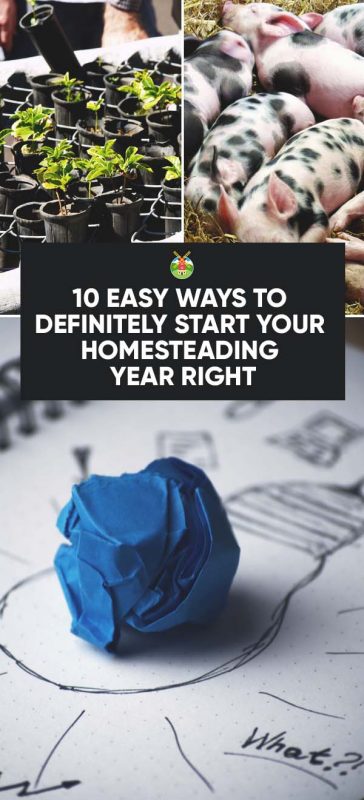
How to Start Your Homesteading Year Right
Here is what I do every year:
1. Set Goals
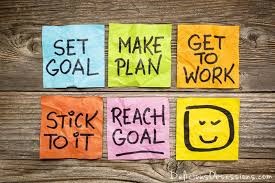
via Drew Baird Fitness
Every January my husband and I sit down and have a long talk. We talk about what we did well during last homesteading year’s growing season.
Then we discuss what we could’ve done better.
Finally, we talk about the things that we hope to do this homesteading year. Then we start narrowing it all down and developing goals for our homestead in the upcoming year.
From there, we put the goals down on paper, prioritize them in importance, and then get to work on how we are going to accomplish these goals.
2. Plan the Garden
Usually, the top goal we have is to produce more in our garden. When we first began gardening it was very small and just meant to off-set grocery expenses.
Then the next few years we tried to grow enough food to feed our family without the grocery store.
Now, we grow a large enough garden to feed us and help off-set my parents and my sister’s grocery bills.
However, this homesteading year we hope to grow enough food for us all to live on throughout the year.
So in order to do that, we have to make a plan. We need to know what we plan on growing, when the seeds need to be started, and when everything should be planted. If we don’t do this, then it becomes very easy to fall behind or miss the growing season altogether.
3. Map the Garden
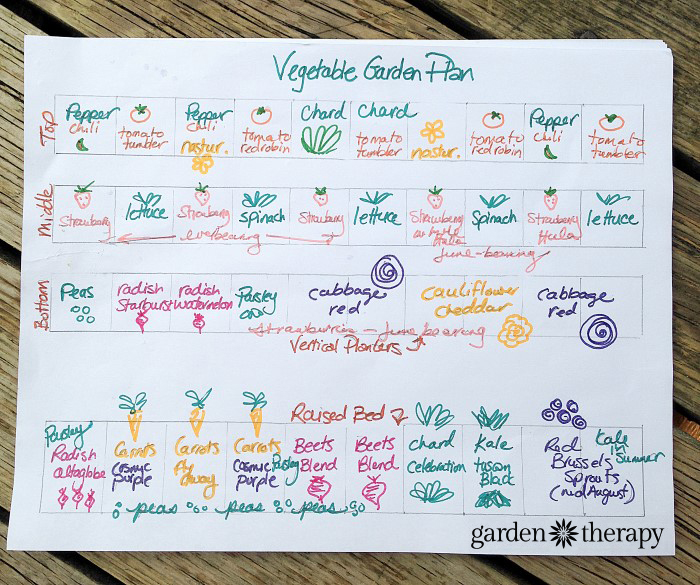
via Garden Therapy
Once we know what we are growing and when it needs to be started, we need to map our garden so we know how it will all fit together.
Now, for us, this varies a little every homesteading year. When we first started, we just wanted everything to grow where it would get what it needed to grow well.
For instance, some plants need direct sunlight so we wanted to make sure that they were planted out in the open.
Then you have other plants that need a little more shade so we’d plant them towards the back of our garden closer to the tree line where they would get some shade throughout the day.
But since our garden has become so much larger over the years, we now have to think about functionality too.
So we once could weed our garden with just a hoe, but now, we have to be able to fit the tractor through the garden because it is very difficult to keep it up by hand at this point. Which means, we have to plant a tall row and then a shorter row so the tractor has room to maneuver.
As you can tell, there are lots to think about when mapping out your garden. Be sure to take the time to think it all through before you put the labor into it.
4. Gather Everything I Need
Once you have your garden all planned out, it is time to gather your materials. You need to make sure you have everything you need in order to start your seeds on time.
Then you’ll need to make sure you have the seeds you need whether you order them or harvested them yourself the homesteading year prior.
Either way, you need to make sure that you are ready to go when the time comes. You don’t want to be scrambling at the last minute.
Believe me, you need to start seeds at the right time because you only have a short window for some crops.
So be prepared and get everything set-up and ready to roll. Then when it is time to get everything rolling, you’ll just need to put the seeds in the dirt to get the party started.
5. Do My Research
Do you go with what you’ve always done, or do you like to try new things each year? We like to try new things because my husband is one of those people that is always pushing forward. He wants to see if he can do something new.
So that is why our garden usually expands, we add some animals some homesteading years, and take some animals away from our homestead other years. We keep making changes to see how much more efficiently we can get our homestead to run.
But with every new adventure, it requires some research. The time to do your research isn’t in the middle of your experiment. It is before.
So that way, you are a little more prepared for the curveballs that may come your way.
6. Design Any New Additions
With new experiments, comes new requirements.
For instance, if you are going to begin raising pigs this homesteading year, then you have to make preparations for those pigs.
Meaning, they’ll need a place to live, eat, get water, and anything else they need in the process.
But you can’t just start building. You’ll need to do your research on the best options for pig housing, and then you can begin designing where this would need to go on your property and how you would want it all to lay out.
So use this time to really think through any changes you are going to make around your homestead and design them how you’d like so you’ll still be happy with the layout and functionality of it.
7. Budgeting is a Must
After you research, plan, and design the aspects of your homestead, it is time to budget. You need to know what starting seeds are going to cost you. You also need to know what any new additions are going to cost you.
Once you have the costs, you can create a budget so you can figure out how you are going to afford it or if you can afford it at all.
If you can, great! Then get your financial plan together and stick to it.
But if you can’t, then you’ll need to go back and adjust things down a bit until you make it affordable. Then create a plan and stick to it.
Obviously, budgeting is a must before you get rolling on your homestead goals for the year, so you have the means to accomplish your goals.
8. Organization is Key
Next, you’ll need to make sure that you are organized. You want to take the time before the homesteading year gets started (if you didn’t get it done in the fall) to organize your sheds and buildings. It is cold outside anyway and there isn’t always a ton to do around the homestead during the winter.
So this is the perfect time to make sure you are starting off organized.
Also, organize your plans and budget. You’ll want to possibly put them into a spreadsheet where it is easy to make changes and track your goals and spending.
Then you can see where your progress at each stage of the year.
So if you want to have a smoother homesteading year, remember that organization is a vital step in the process.
9. Learn to Juggle
This is something I have to do at the beginning of each year. Though we homestead, we have a life outside of that aspect too.
For instance, we have children, we have family in other states, we homeschool, and the list goes on and on.
So before the year gets too far along, I like to try and plan the other aspects of our lives out as much as I can as well.
As an example, I like to plan my next homeschool year in January. I get my curriculum figured out and also our school calendar for the following school year. That way, I know what is going and how that schedule is going to mesh with our homesteading year’s schedule.
Like this year, we actually started back to school in July. This was in the middle of canning season which would have made life difficult if I hadn’t planned ahead.
Thankfully, we school for more than the typical 180 days. So on heavy canning days, I was able to plan ahead and have other learning activities for the kids to do while I was canning that wouldn’t require too much of my instruction.
Then I had plenty of other days still on the calendar for us to finish out our regular curriculum. That wouldn’t have happened if I hadn’t planned ahead and thought about how I was going to juggle all of that.
So whether you are a homeschooler or not, you are going to need to take a vacation, a trip to visit a family member, or maybe you work a regular 40 hour a week job that has busier times than others.
Either way, take this time before the bulk of the homesteading year starts and figure out a plan as to how you are going to make it all work around other aspects of your schedule.
10. Be Prepared to Flex
Finally, you need to get yourself prepared ahead of time to be flexible. Sometimes because we spend so much time planning, organizing, and scheduling we think everything should just go as planned.
But we all know that isn’t life. We can be the most organized person on the planet and something could still go haywire.
So go ahead and take this time to mentally prepare yourself for things to not go exactly according to plan. Just go ahead and make yourself okay with that because you know you are going to wake up on a day you’d planned to butcher chickens, and it’ll be raining.
Or you’ll be in the thick of canning season and a storm will come through and knock your power out for a day or so which will put you behind.
Also, you could be like me, and have lots of children under your feet. You have big plans to get things done in a certain order, a certain way, on a particular day.
But for whatever reason, that happens to be the day that those children wake up on the wrong side of the bed, and you have to move at a snail’s pace because of all of the tears being shed over seemingly small things. Yes, that happens pretty regularly around my home.
Either way, just mentally prepare yourself for things to get a little off track from time to time and make peace with that reality.
So you now know the 10 steps I take every year to try to get my homestead started off on the right foot. It has helped us to grow, learn, and produce a little more with each passing year.
Even this past year, we moved in the middle of growing season to a larger homestead. But since we were planning on the move, we were still able to grow and put quite a bit of food away for the year. In my experience, planning ahead definitely pays off.

